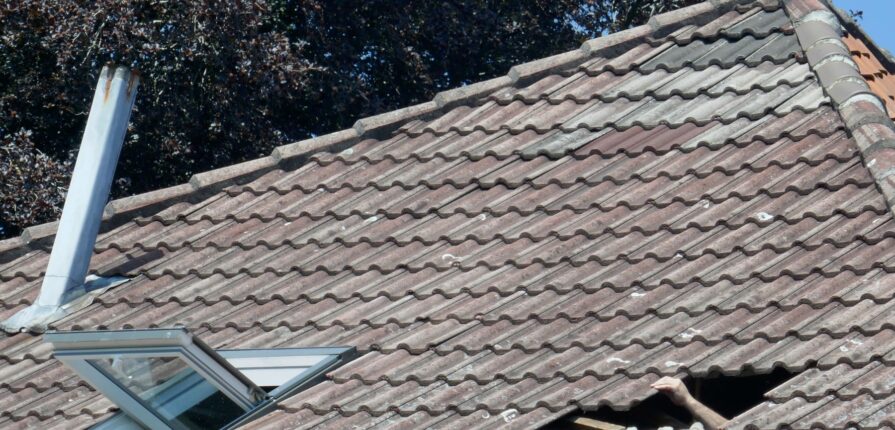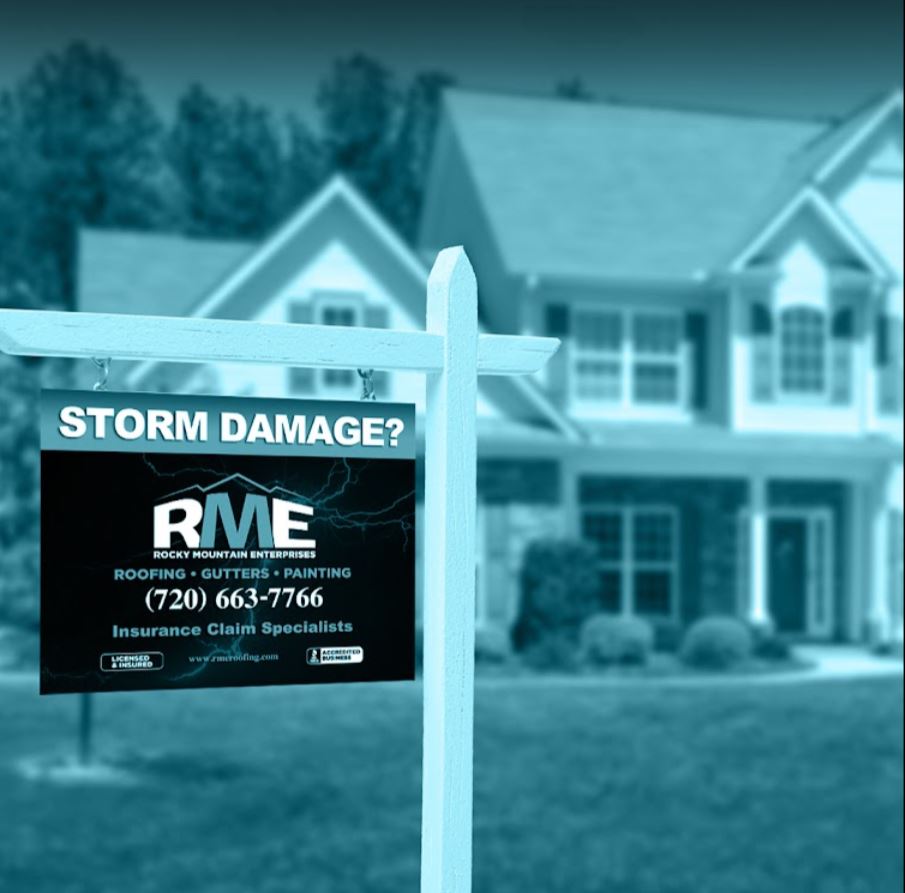With hail season well underway and winter storms just around the corner, now is a great time to review your roof and scan for damage. Storm damage typical in Colorado Springs includes hail damage, wind damage, and ice dams, to mention a few. Colorado Springs is known for its extreme weather, from hail storms to above-average winter storms. It is essential to address any damages as soon as possible to prevent costly repairs. Let’s talk about the most common storm damage and how to begin your Colorado Springs home storm damage repair.
Typical Storm Damage for Colorado Springs, Colorado, Homes
Properties in the beautiful state of Colorado see a variety of weather storms throughout the seasons. Summer brings hail storms, while winter brings heavy snow. The icy spring and fall seasons can also damage your home or building. Here are some of the most common storm damage repairs done in Colorado Springs and how to repair your property storm damage with a trusted professional.
Hail Damage on the Roof
Hail damage causes leaks and other problems to roofs in Colorado Springs. An annual occurrence, roofs in Colorado Springs can protect you from 30+ hail storms during the season. The severity of roof damage from hailstones can vary depending on some elements, including hail size, wind speed, wind direction, roof material, the components’ age, and the slope of your roof.
Hail damage to your roof can be functional or cosmetic; the latter is sometimes more severe than it appears. Broken edges, bruising, punctures, and granule loss can all lead to severe issues, even if they appear cosmetic at first. Your home insurance usually covers hail damage, so do not delay repairs, even if they seem minor. Should you suspect hail damage, please reach out and have your roof inspected as soon as possible. RME can help you navigate the process of insurance-covered roof repairs after a storm.
Roof Damage from Strong Winds
Roofs are especially vulnerable to wind damage because powerful winds do not strike each roof equally. High winds tend to harm the margins of the roof or portions of the roof that are already loose. A chain reaction can commence when winds readily rip loose shingles, making these unsecured roof areas easy targets. Falling objects such as tree branches, storm debris, and hail stones frequently damage roofs.
Experiencing winds of 45 mph or greater is a sign for you to inspect your roof for the typical indicators of roof damage. Loose shingles, missing shingles, chimney difficulties, curling or peeling shingles, granule loss, damaged soffit or fascia, and inside leaks are all signs of wind damage on a roof. High winds can also force tree limbs to fall, causing roof damage. After sustaining wind damage, your roof may leak or decay due to water exposure.
Wind damage to a roof can be repaired. The extent of the repair will be determined by the scope of the damage, which could range from shingle replacement to a new roof. Contact RME for a free roof storm damage inspection if you discover roof damage.
Ice Dams
After heavy snowfall on the roof, ice dams form. When the roof warms up from heat within the attic, the snow melts, and meltwater runs down the roof. When it reaches the roof’s edge, it will freeze and form an ice pile. This process repeating can result in significant ice dams that can cause major damage to the home.
Ice dams can damage your roof or cause other problems in your home in various ways. Roof leaking, shingles damage, and gutters damage are common Colorado Springs roof damage sustained by roofs due to ice dams. Stained or sagging ceilings, peeling paint, and soggy insulation can indicate storm damage. If any of these are present, then it is very likely that your roof has been damaged.
Roof Sun Damage
The direct exposure of a roof to sunlight is an often-overlooked cause of weather-related roof damage. Colorado Springs’ elevation magnifies the effects of solar overexposure.
Shingles are especially vulnerable to UV radiation from the sun. Asphalt heats up quickly in the sun, causing it to deform, run, or wear out. Shingles exposed to direct sunlight deteriorate faster and have a shorter lifespan. Roof and housing components made of plastic are also susceptible to solar damage. Plastic heats up faster and can distort or crack over time. Brackets and flashings are two components that can break or warp when exposed to direct sunlight.
Bleaching occurs when the color begins to fade or change due to long-term sun exposure. This process results in a visually unpleasant roof, decreasing the curb appeal and property value.
Checking for Roof Damage
Start your examination by looking at the outside of your roof, regardless of its type. With both feet on the ground, you may assess the state of your roof by looking for evident damage to you. It is strongly advised that you do not climb onto your roof.
Look for any debris blown on top of the roof during a storm. Debris may have damaged your roof on impact or create additional damage if not removed immediately. If there is visible damage, such as a hole caused by flying debris or a fallen tree, call professional help immediately to avoid extra repairs.
Colorado Springs Home Storm Damage Repair with RME
Get in touch with RME roofing if your roof shows any signs of needing roofing storm damage repair in Colorado Springs, Colorado. Serving homes and businesses from the Denver metro area to Colorado Springs since 2005, we are Colorado’s trusted roofing company.


